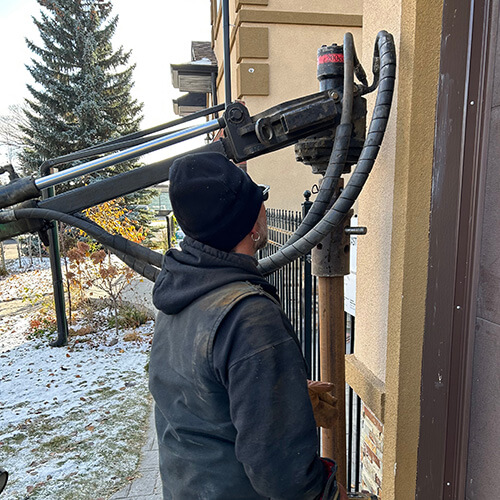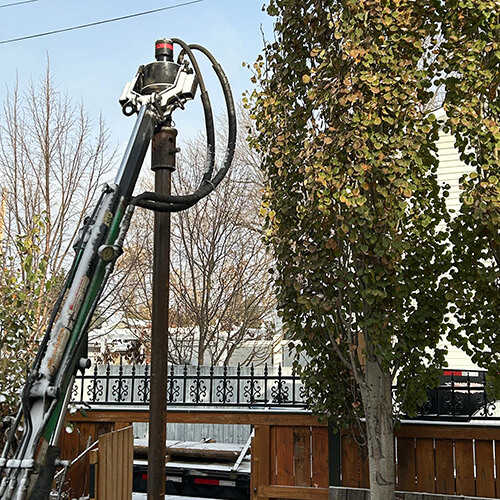How long will screw piles last?
Relevant regulations in Alberta
To ensure the durability and longevity of the helical piles used in your project, it must first be established that the piles installed conform to the Alberta Building Code. The Alberta Building Code (ABC), which establishes standards and guidelines for safe and environmentally friendly construction practices, governs construction activities in Alberta. The Alberta Building Code regulates the use of various foundation systems, including Edmonton screw piles, to ensure compliance with structural and safety standards. Builders and homeowners are encouraged to consult the ABC and work with qualified professionals to ensure that their foundation choices meet the regulatory requirements.
CCMC (NRC) Code Compliance
The Canadian Construction Materials Centre (CCMC), operated by the National Research Council (NRC), plays a crucial role in evaluating construction materials and systems for compliance with national standards. Screw pile manufacturers require CCMC approval that demonstrates the reliability and safety of their products. The approval process involves rigorous testing and assessment to ensure that screw piles meet or exceed established performance standards. It’s through the code compliance with the CCMC standards that the 50 plus year life expectancy of screw piles can be determined.


Screw Pile Corotion Control
Galvanized vs. Steel with Sacrificial Material
A common question in the realm of screw piles is whether galvanization is necessary for their durability against corrosion. Contrary to popular belief, screw piles do not need to be galvanized for long-term structural performance. Galvanization involves coating steel with a layer of zinc to protect against corrosion. While this method is effective, it is NOT necessary and it has environmental and cost implications.
A more sustainable and cost-effective alternative involves using steel screw piles with sacrificial material. In this approach, additional sacrificial material is added to the steel, providing corrosion resistance without the need for galvanization.
How Does Sacrificial Material Work?
Sacrificial material is a method used to prevent loss of structural integrity to a screw pile by simply adding thickness to the material that the pile is made from, in this case steel. This is essentially overbuilding the pile with thicker steel so that it will take in excess of 50 years for the sacrificial material added to corrode away and allow for the engineered structural integrity to begin to be negatively affected.
Environmental Consideration
The galvanization process involves the use of zinc, a resource-intensive material. On the other hand, adding sacrificial materials is simpler and more environmentally friendly, reducing the ecological footprint associated with zinc extraction and processing.
Cost Savings
Galvanization can be an expensive process, contributing to the overall cost of screw piles. The addition of thicker steel to a helical pile makes sacrificial material a far more affordable method of corrosion management.
Conclusion
In conclusion, a number of variables, such as material quality, installation techniques, and environmental factors, affect how long screw piles last. In Alberta, adherence to the Alberta Building Code and compliance with CCMC codes ensure that screw pile foundations meet stringent standards for safety and durability. When manufactured and installed in conformance with these requirements, helical screw piles can last from 50 to 75 years before structural integrity begins to be compromised.
While galvanization is a traditional method for corrosion resistance, using steel with added sacrificial material is a more sustainable and cost-effective alternative. This approach aligns with environmental considerations, affordability, and adaptability in different soil conditions.
